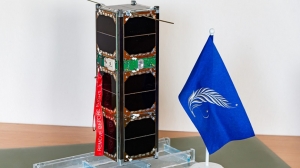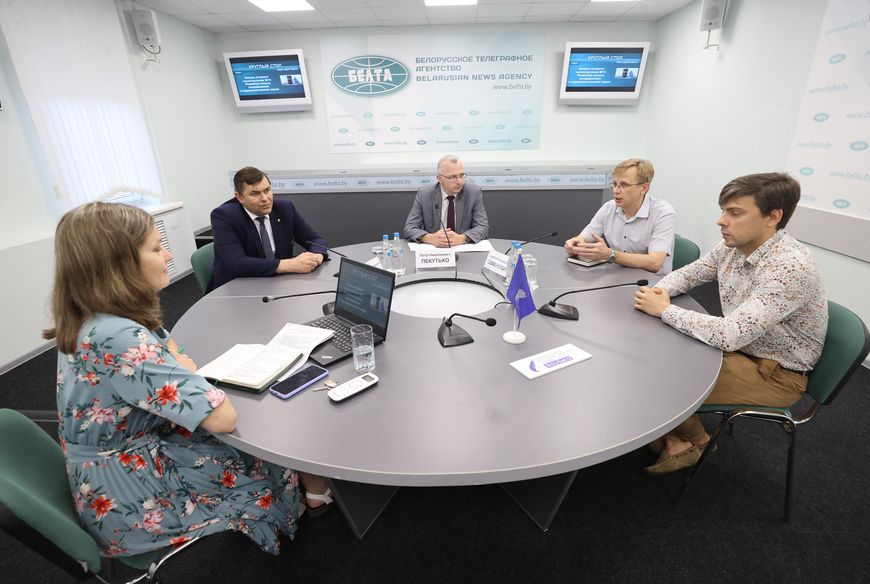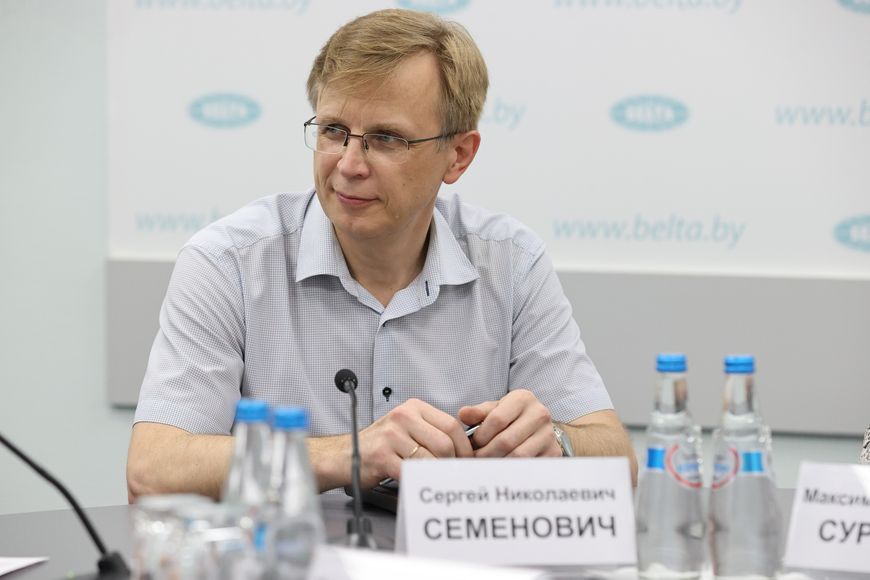Functionality of Belarusian State University's second nano satellite described

MINSK, 7 July (BelTA) – The functionality of Belarusian State University's second nano satellite BSUSat-2 is rather diverse. This satellite is kind of an orbital flying lab, BelTA learned from Sergei Semenovich, Head of the Information and Measurement Systems Lab of the Informatics and Computer Systems Chair of the Radio Physics and Computer Systems Faculty of Belarusian State University.
Sergei Semenovich said: “We are accustomed to saying that it is a small spacecraft due to its size. But in essence it has the truly broad functionality of large spacecraft. The Education Ministry wanted a flying lab for training personnel in the area of aerospace technologies. An operational satellite was created with the necessary service subsystems and various scientific modules. University students will have remote access to them.”

Sergei Semenovich remarked that the satellite allows accomplishing various education goals, writing course papers and diploma papers, and even testing results of thesis research. “As part of lab work a student can task the satellite that flies over Belarus and literally 95 minutes later (one full cycle around Earth) or half an hour later when the satellite flies over the other side of the globe the resulting data of the experiment are transmitted to the lab,” the official explained.
The official explained that the nano satellite incorporates a selection of rather sophisticated scientific modules, which can handle sophisticated scientific tasks and technological tasks. In particular, the task to research a technology for special optic protective films for space equipment is being accomplished. The Informatics and Computer Systems Chair has helped create special optic spray coatings, which degradation will be studied in the course of this mission. The coatings will degrade over time due to solar radiation and students will be able to examine parameters of the coatings, Sergei Semenovich said. Another onboard module, which implements a radio occultation probing method, will allow working out algorithms for evaluating the state of Earth's ionosphere and atmosphere.

The satellite also has a module, which can be used in civil aviation for tracking the movement of aircraft. “It is no secret that it is difficult to control the flight of aircraft over oceans. A satellite flying over an ocean can see radio beacons of aircraft below the satellite and can beam down this data to Earth's surface literally 20 minutes later when it reaches the reception zone of amateur radio ground stations,” the official said.
Speaking about BSUSat-2's optical system, Sergei Semenovich noted that certainly, it cannot compete with the optical system of large spacecraft due to the limited size and energy parameters. Nevertheless, these cameras can take photos of entire Minsk and even entire Belarus. To make it possible, the satellite will have to be properly positioned. A unique orientation system based on four flywheels has been created as part of the project and will be tested in orbit.
The satellite's onboard systems allow carrying out various experiments to practice remote Earth sensing algorithms. The greater the interest of research students, the more tasks they will be able to accomplish. For instance, a student is instructed to take photos of St. Petersburg or Minsk and analyze the pictures. According to Sergei Semenovich, the cameras can take pictures in various spectrums. It means that it is possible to evaluate current parameters of the atmosphere and the surface of Earth. If necessary, remote access to the satellite can be granted to foreign researchers.
Sergei Semenovich stressed that thanks to hands-on experience of operating this flying lab students will go to work at aerospace industry enterprises as trained specialists, who know how to operate a real spacecraft.
By the way, there are plans to write a candidate's dissertation following the successful insertion of BSUSat-2 into orbit. The dissertation provides for calculating the trajectory of the satellite's flight. Thanks to the scientist, who is working on it, it was possible to fix the satellite's signal within the first few hours after launch. “It is difficult to find and identify a small spacecraft in endless outer space. It is even more difficult to calculate the trajectory for correct reception of radio telemetry data,” Sergei Semenovich noted.
The satellite takes 95 minutes to fly round the planet. It flies over Belarus six times per day: three times in the morning and three in the evening. In order to maintain a permanent connection with the satellite, the developers assisted by the Communications and Informatization Ministry had to register their radio frequencies and confirm participation in the international amateur radio community. This is why radio fans can receive BSUSat-2 signals all over the world now while enabling Belarusians to get telemetry data and experimental data using Internet technologies 24/7.













